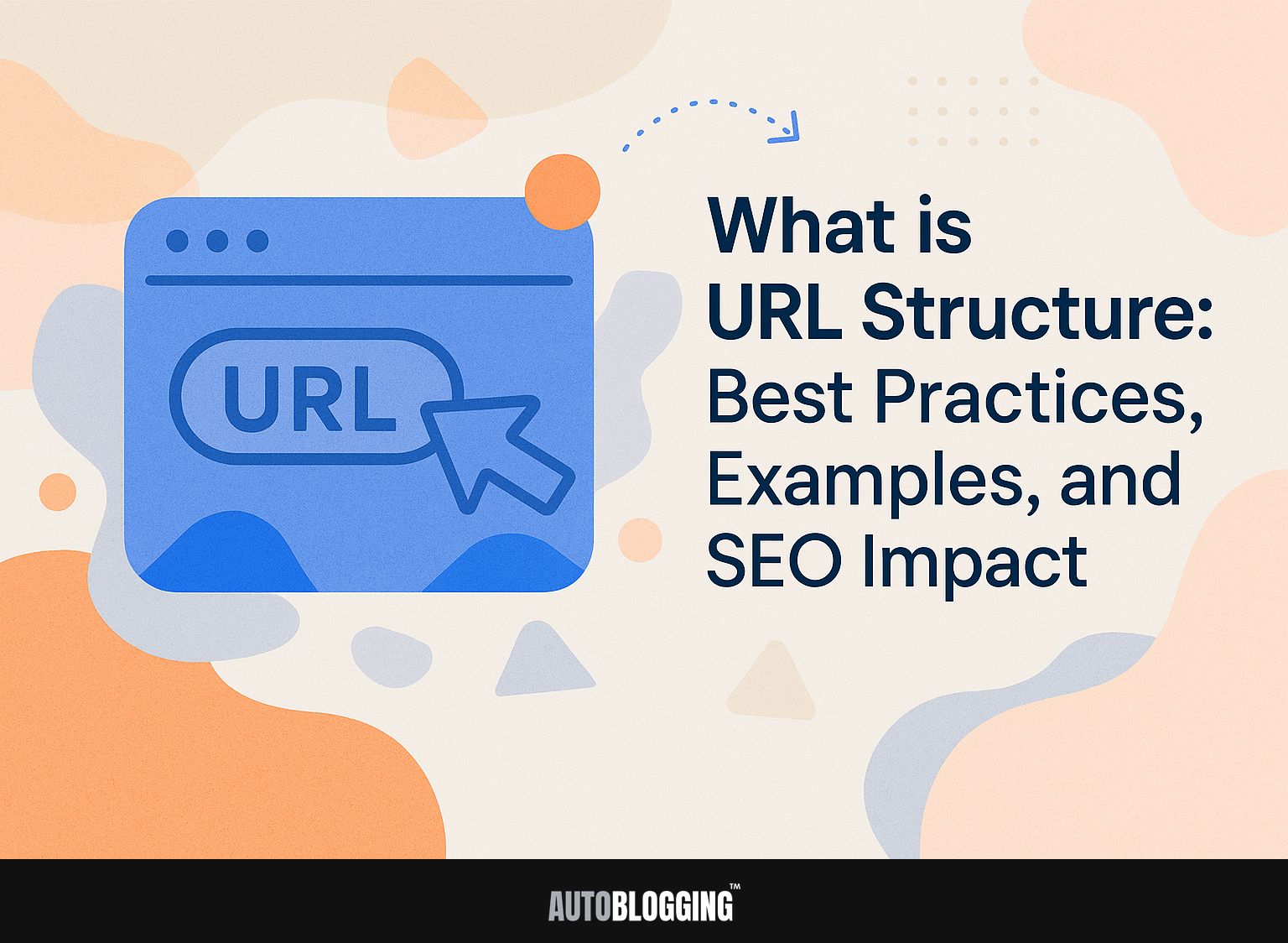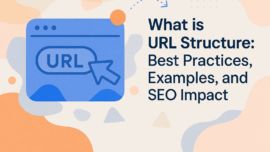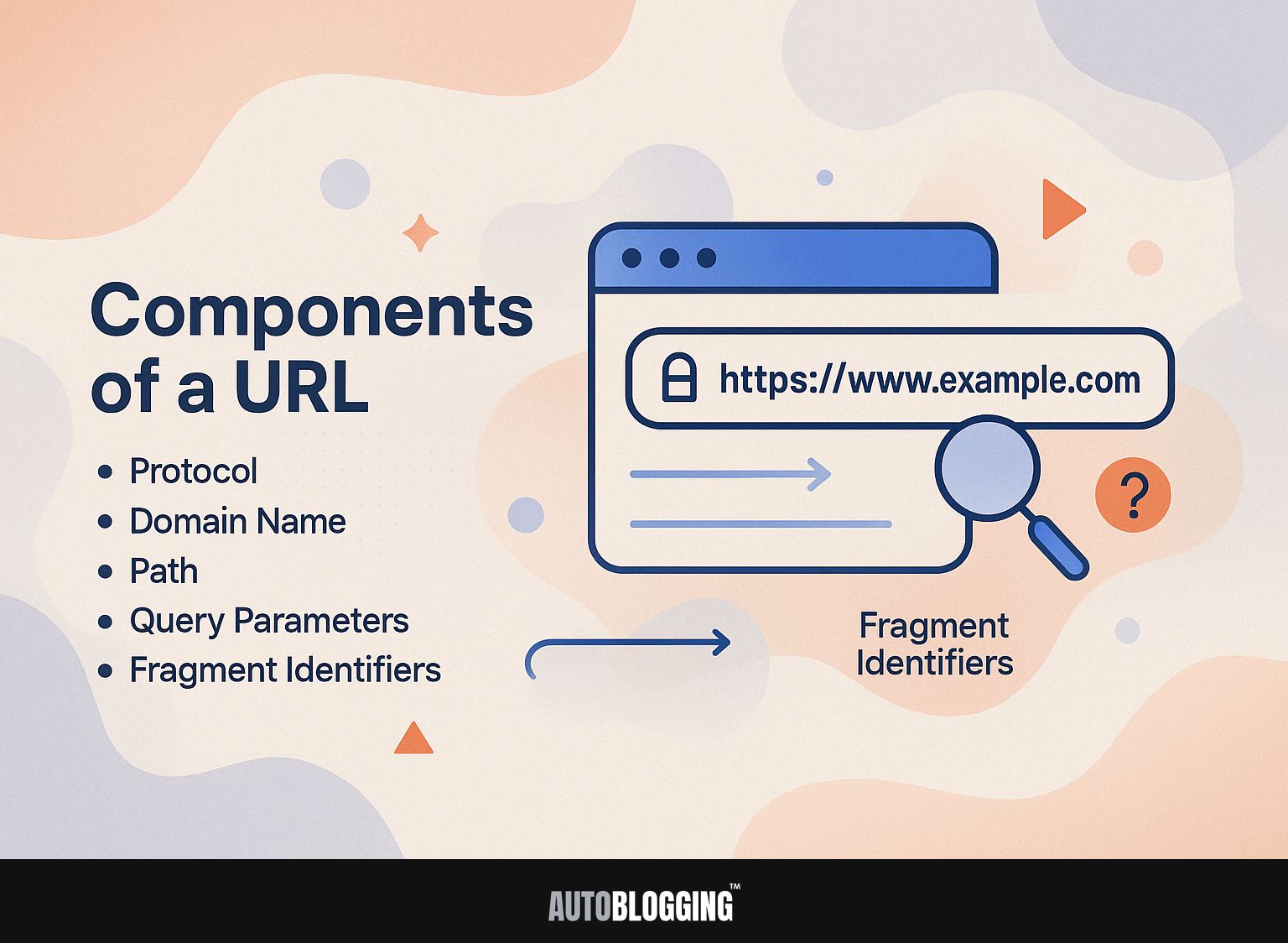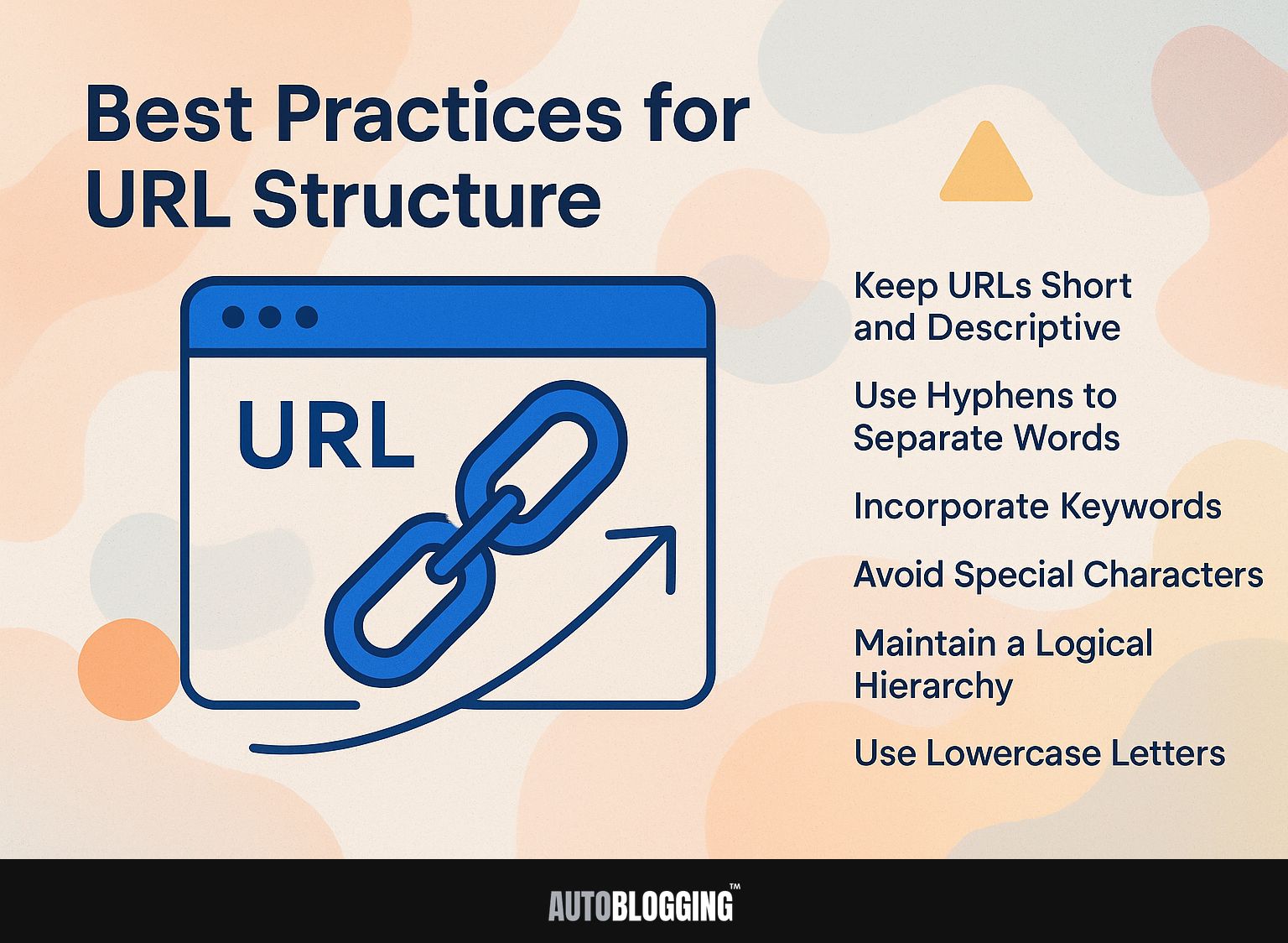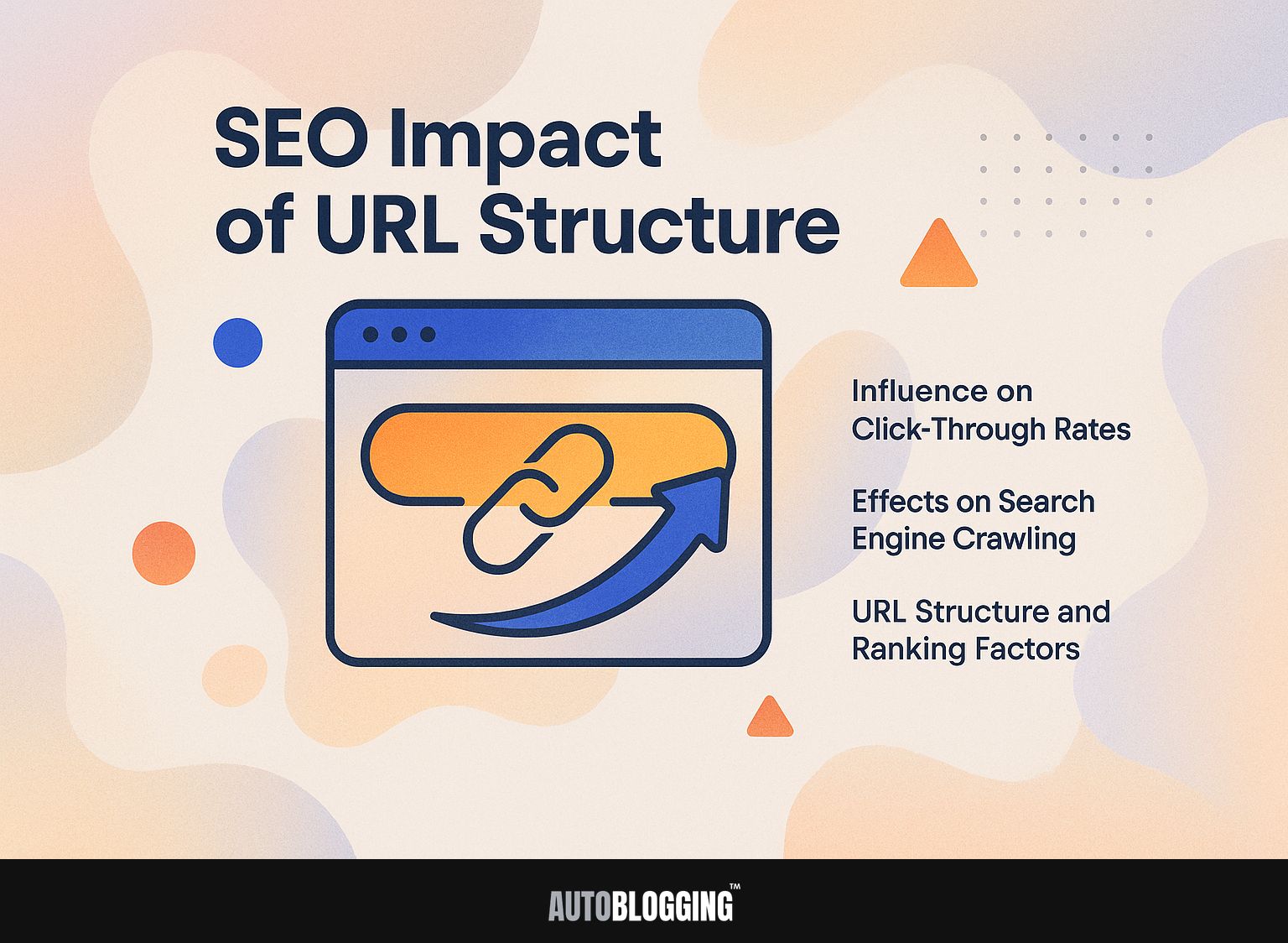Knowing the URL structure is important for improving your online visibility. A well-structured web address-comprising the protocol (HTTP or HTTPS), domain name, and resource locator-can significantly impact your site’s SEO. In this article, we’ll look at good strategies, give real-life examples, and talk about how a well-planned URL can affect SEO. Improve your web addresses to increase visibility and make the user experience better!
Key Takeaways:
- Keep your URLs short and descriptive, using hyphens to separate words and incorporating relevant keywords to improve user experience and search engine optimization.
- A clear URL can improve click rates, help search engines find your site, and affect rankings, making it an important part of improving a website.
- Examples of effective URL structures include simple e-commerce URLs, blog post URLs, and service page URLs that follow best practices and maintain a logical hierarchy.
Contents
- Components of a URL
- Best Practices for URL Structure
- Examples of Effective URL Structures
- SEO Impact of URL Structure
- Frequently Asked Questions
- 1. What is URL Structure and why is it important for SEO?
- 2. What are some best practices for creating a good URL Structure?
- 3. Can you give some examples of good URL Structures?
- 4. How does URL Structure impact website usability?
- 5. Does URL Structure affect website loading speed?
- 6. Is there an SEO advantage to using a specific URL Structure?
1. Definition of URL Structure
A URL structure defines the way web addresses are organized, encompassing all components from protocol to parameters. A typical URL consists of five main components.
- First is the protocol (http or https), which indicates the method of data transfer.
- Next is the domain name, representing the website’s address, such as www.example.com.
- Following the domain is the path, which leads to a specific page or resource, like /products/item1.
- After the path, we find query parameters, starting with a question mark, which can provide additional data (e.g.,?id=123).
- Fragments, preceded by a hashtag, direct to a particular section of the page (#section2).
Knowing this structure aids in SEO and managing links.
2. Importance of URL Structure
Organized URLs can improve SEO results, helping search engines like Google find and catalog pages easily.
For instance, businesses that simplified their URLs saw improved click-through rates. A notable example is a leading e-commerce site that reformatted its URLs from ‘www.example.com/category/subcategory/product12345’ to ‘www.example.com/product-name’. This led to a 30% increase in organic traffic within three months.
Short, clear URLs with specific keywords can help them get indexed faster. Tools like Google’s URL Inspection Tool can help you check indexing status and improve your URL structures smoothly.
Components of a URL
Each URL is made up of important parts that affect how it works and its importance in moving around the web. Understanding these components can enhance your on-page strategies (explored in our comprehensive guide on on-page SEO techniques), helping you optimize content effectively.
1. Protocol
The protocol indicates the method used for data communication, with HTTPS providing a secure encrypted method essential for user trust.
HTTPS encrypts data exchanged between users and websites, significantly enhancing security against threats like man-in-the-middle attacks. This encryption keeps important data like passwords and credit card information secure, which increases user confidence.
Statistics show that 84% of users abandon sites that don’t use HTTPS, impacting traffic and conversions.
Google gives preference to HTTPS sites in search results, which is important for SEO. Changing to HTTPS means getting an SSL certificate and updating links to make browsing secure, which helps build trust in your site.
2. Domain Name
The domain name serves as the human-readable address of a website, influencing both branding and SEO through keyword relevance.
Picking the best domain setup can greatly improve your online presence. Good domain names usually contain words linked to your business, making them memorable and easier to find in online searches.
For instance, a travel company might choose a name like ‘ExploreAway.com’ instead of a simple name. Consider using a subdomain for particular campaigns, like ‘blog.AdventureAway.com’ to promote content.
Always opt for a.com top-level domain where possible, as it’s universally recognized and trusted, supporting both branding and credibility.
3. Path
The path shows where a page is located on a server, helping search engines and users find the content on a website.
Good URL formats improve how users find their way around and help with search engine rankings. For instance, a well-structured path like “www.example.com/products/electronics/laptops” clearly indicates the hierarchy and helps search engines understand the content’s context.
Whereas a poorly structured path, such as “www.example.com/?p=12345,” lacks clarity and can negatively impact indexing. Shorter, meaningful URLs typically load faster, improving overall site performance.
Choose URLs that include important words, are simple to read, and follow a clear pattern to help both users and search engines.
4. Query Parameters
Query parameters follow a question mark in a URL and can be used to pass data to servers, enhancing user interactions and tracking.
For example, e-commerce websites such as Amazon and eBay use query parameters to monitor user campaigns. By appending identifiers such as utm_source or utm_medium to their URLs, they gather data on referral sources and marketing effectiveness.
When a user clicks a link like “www.example.com?utm_source=facebook&utm_campaign=sale the site can analyze which campaigns drive conversions.
To do this, tools like Google Analytics can monitor these parameters automatically, helping businesses to improve their marketing plans using real data.
5. Fragment Identifiers
Fragment identifiers, marked by a hash (#), guide users to certain parts of a web page. This makes it easier to move around and use the site.
By utilizing fragment identifiers, you can link directly to headlines or sections within a long article. For instance, if your content discusses various topics such as ‘Benefits of Healthy Eating’ and ‘Exercise Tips,’ a link like www.example.com#healthy-eating will take users directly to that section.
This is especially useful in long guides or FAQs. HTML5 and Markdown support these identifiers easily, helping improve both user experience and SEO by creating simple, easy-to-use links.
Best Practices for URL Structure
Using effective URL structure can greatly climb up the SERPs and increase user confidence, helping your site compete better. If you’re interested in learning more about optimizing your on-page elements, you might find our insights on on-page SEO techniques and practices beneficial.
1. Keep URLs Short and Descriptive
URLs should ideally be under 60 characters to maintain clarity and improve click-through rates, with descriptive keywords included for better SEO.
Short URLs make it easier for users and increase the ease of sharing on social media. For example, a URL like ‘www.example.com/2023/10/seo-tips’ (30 characters) is more engaging than ‘www.example.com/articles/2023/10/10-essential-seo-tips-to-improve-your-ranking’ (93 characters).
Tools like Moz Pro can help track how different URLs are doing by providing information on how often they are clicked and how users engage with them. Using URL shorteners like Bitly can make long links shorter and provide data on user clicks, helping you improve your approach.
2. Use Hyphens to Separate Words
Using hyphens in URLs makes them easier to read and helps search engines understand separate words, which improves SEO results.
For instance, a URL like ‘example.com/best-pizza-recipe’ is clearer and more likely to rank well compared to ‘example.com/best_pizza_recipe,’ which may be misread as a single word.
Hyphens act as space markers between words, promoting better indexing. Try to keep your slugs short, ideally with fewer than 60 characters. Include keywords thoughtfully without overloading them.
Don’t use underscores, since search engines might skip them, making your content harder to find. Proper URL structure can significantly influence your site’s SEO success.
3. Incorporate Keywords
Incorporating relevant keywords within URLs can significantly improve search visibility and ranking potential on search engines like Google.
To do keyword research well, begin by using tools such as Google Keyword Planner. This tool lets you check keyword ideas and see their search numbers, how hard it is to rank, and how much they cost per click.
Look for specific keywords that provide more detail and usually have less competition, which makes it easier to increase their search position. Once you have your keywords, place them thoughtfully into your URLs.
For example, instead of using a basic URL like ‘example.com/article123’, change it to ‘example.com/best-keyword-strategies’. This small change can improve SEO results and make things clearer for users.
4. Avoid Special Characters
URLs should avoid special characters as they can complicate indexing and lead to user mistrust, affecting SEO performance.
For optimal URL structure, focus on simplicity and clarity. Change special symbols such as &, %, or # into hyphens or underscores to make things clearer.
For example, change a URL from www.example.com/page?id=123&sort=asc to www.example.com/page-123-sort-asc.
Employ tools like Google’s URL Builder to create clean links for tracking campaigns without clutter. Use a SEO tool like Screaming Frog to check your URLs often. Fix any problems so they work well for people and search engines.
5. Maintain a Logical Hierarchy
Creating a well-organized URL system helps users find what they need and improves your website’s SEO.
A well-structured site might use a hierarchy like this:
/products/electronics/phones/
for phones, whereas a poorly structured site could simply use
/products/12345
, which offers no context.
Search engines prefer clear, descriptive URLs, as they signal the content type. For example, an e-commerce site that organizes products into categories improves crawl efficiency and user experience.
Breadcrumb navigation helps users return to previous sections, improving site usability.
6. Use Lowercase Letters
Using lowercase letters in URLs is essential as URLs are case-sensitive, and consistency prevents potential errors in user access.
Research indicates that approximately 30% of users mistakenly enter uppercase letters in URLs, leading to a 15% decrease in traffic for affected sites.
To keep things consistent, use steps like:
- Making a style guide for your team,
- Adding tools like Yoast SEO to make sure URLs are in lowercase,
- Setting up URL redirect rules on your server.
Regular audits of your site can help identify and correct any inconsistencies, further improving user experience and maintaining your site’s credibility.
Examples of Effective URL Structures
Looking at how URLs are set up gives useful information about how to improve your own URLs. For an extensive analysis of this trend, our strategies for justifying your SEO investment in 2025 offers valuable insights.
1. Simple E-commerce URL
An example of a well-structured e-commerce URL is ‘https://www.example.com/products/laptops/dell-xps-13/’, which is short, descriptive, and keyword-rich. This URL structure helps SEO by including important words like ‘products’, ‘laptops’, and ‘dell-xps-13’, which make it easier to find in searches.
For readability, the URL is easy to understand, allowing users to predict the content they’ll encounter. User trust increases because a clear structure shows professionalism and organization.
Analytics reveal that user engagement is higher, with a 25% lower bounce rate and a 15% increase in conversions compared to less structured URLs. Implementing similar practices can substantially benefit your online store.
2. Blog Post URL Example
A good blog post URL such as ‘https://www.example.com/2023/10/top-10-seo-tips/’ is short, clearly shows what the content is about, and includes when it was published. This clarity helps search engines grasp how your post relates to user queries, which might increase your rankings.
To improve how users interact with your site, make sure the URL has important words, skips extra details, and stays under 60 characters.
Tools like Yoast SEO can help you create better URLs in WordPress, while Google Search Console can monitor organic traffic growth after improvements.
Checking your site’s analytics often can show which URLs bring in the most visitors, guiding you to improve your content strategy.
3. Service Page URL Example
For a service-related site, a good URL could be ‘https://www.example.com/local-services/plumbing/’, which is clear and informative. This URL structure benefits local SEO by clearly indicating both the service offered and the geographical focus.
For instance, a plumbing company in Austin could use ‘https://www.example.com/local-services/plumbing/austin/’ to target local customers more effectively.
This clarity makes it easier for search engines to find and for users to move through the site, helping new clients quickly see what services are offered. Companies like ABC Plumbers have seen a 30% rise in traffic after improving their URL structure. This shows that a clear, descriptive format can lead to more engagement and conversions.
SEO Impact of URL Structure
The structure of URLs can significantly influence SEO, affecting click rates and how effectively search engines can examine web pages. For a more comprehensive understanding of this topic, explore our detailed article on URL Structure in SEO.
1. Influence on Click-Through Rates
URLs that are clear and descriptive can increase click-through rates by up to 30%, according to recent studies on user behavior.
To improve how clear a URL is, use words that relate directly to the topic of the content. For example, instead of a vague URL like ‘www.example.com/post123’, opt for ‘www.example.com/healthy-eating-tips’.
Tools like Google Search Console can help monitor clicks, letting you test different formats for effectiveness. Keep URLs short, ideally 50-60 characters long.
Run A/B tests with different options to find out which setup increases user interaction, showing how clear content affects click-through rates.
2. Effects on Search Engine Crawling
A clear URL helps search engines go through pages and makes sure they are indexed correctly.
For example, a site with a URL like “www.example.com/product?id=1234” can confuse crawlers, hindering indexing. In contrast, a clean URL such as “www.example.com/products/widget-name” is more descriptive and easier for search engines to interpret.
To improve your URLs, make sure they are short, include keywords, and use hyphens to separate the words.
Tools like Google Search Console can find crawling problems, and following URL structure guidelines can greatly improve your indexing success and SEO results.
3. URL Structure and Ranking Factors
Search engines consider URL structure as one of the key ranking factors, directly influencing how content is prioritized in search results.
A well-structured URL is concise, descriptive, and includes relevant keywords. For example, instead of using a generic URL like ‘www.example.com/page1’, change it to ‘www.example.com/seo-tips-url-optimization’.
Tools like Moz Pro can help you track the performance of your URLs and identify areas for improvement. Regularly reviewing your current URLs makes sure they follow the latest SEO tactics.
Try to keep URLs shorter than 60 characters so they are easy for people to use and search engines to access.
Frequently Asked Questions
1. What is URL Structure and why is it important for SEO?
URL Structure is how a website’s URLs are set up and shown. SEO is important because it helps search engines understand what a website covers and how it is laid out, making it easier for them to examine and index the site.
2. What are some best practices for creating a good URL Structure?
Some best practices for creating a good URL Structure include keeping URLs concise, using keywords, avoiding special characters, and using hyphens to separate words. It is also important to have a logical hierarchy in the URL structure, with the most important pages higher up in the hierarchy.
3. Can you give some examples of good URL Structures?
Some examples of good URL Structures are: – www.example.com/category/subcategory/product – www.example.com/year/month/post-title – www.example.com/service/location – www.example.com/keyword
4. How does URL Structure impact website usability?
A clear website link helps people know what the site is about and find the pages they want. This can improve the overall user experience and increase the likelihood of visitors staying on the site.
5. Does URL Structure affect website loading speed?
Yes, a poorly structured URL can negatively impact website loading speed. This is because long, complex URLs with special characters and unnecessary parameters can take longer to load, which can lead to a decrease in website performance.
6. Is there an SEO advantage to using a specific URL Structure?
While there is no one-size-fits-all approach to URL Structure for SEO, following best practices and having a logical hierarchy can help improve website visibility and rankings. Using keywords in URLs can also improve SEO.

